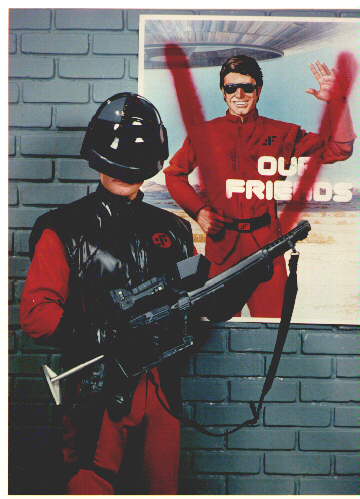My new Creative Labs Soundblaster Live 5.1 soundcard arrived today and… It works. Kind of. I have sound and no boot errors so thats a good thing. What I don’t seem to have is 5.1 surround sound on my 5.1 surround sound speakers, I just get left, right and bass woofer, all of which are on speaker output 2. Outputs 1 and 3, which are front and left and right rear respectively don’t seem to get any output. Maybe ALSA doesn’t do surround sound or you have to pass parameters to the module or something I don’t know.
The mic input, which is the point of buying a new card, seems OKish, but not perfect. I can hear myself through the speakers, but when recording in Audacity I get the same deeeeeeep, bitty ouput I had on my old Dell machine under Dynebolic when I mounted the hard disk as /home. Imagine a cross between an audio cassette being played back slowly and a video clip that is playing at the right speed but dropping frames like nobodys business. Something like that. Weird. I am optimistic however. The main problem under Dynebolic on my Dell machine was that it only had 128MB RAM and it ran out after about 4 or 5 audio tracks. At least on my main machine I have a GB to play with and should be able to do a reasonable job.
As a side note, Woo from Wolves LUG brought Agnula to my attention the other day. It’s a European Commission funded project to create an Open Source audio and multimedia development platform for both business and consumers. I’ll have to take a look some time when I’m not trying to escape the ever growing list of university work I should be doing.
I spent ages today trying to create a disk image of my laptop so I can just wipe it and install Ubuntu. After all of the aggro I had with Tiny, I’m keen to keep a disk image of the OEM Windows install they did in case they ever give me problems about it again. So, first off, Norton Ghost doesn’t do PCMCIA network cards so I can’t do it that way, so I’m down to my 2.2GB mini USB hard disk. This was kind of ok, just slooooow. Plus the disk images were bigger than the USB disk so I had to unplug the USB disk move it to my desktop, copy the image over and then put it back in the the laptop to get the next part of the image. The pain in the ass was that for the last part of the process, it asked for the first image file, which meant copying the last part onto my desktop, putting the first part back on the USB disk, letting Ghost do it’s business and then copying the image back across to my desktop. This is fine but each transfer took about 8 minutes or so. Nevertheless I made a pretty comprehensive backup set. A little extravagant even.
I made an image of the restore partition, an image of the main partition with my own preferred setup, then one of the entire disk, should anything ever go wrong. The only problem was that the last image took something like 3 hours to create, including the copying process and then when I had to put the first image back in so Ghost could (I assume) write how many image files the whole image spans into the first image, it couldn’t recognise the USB disk again no matter what I did. I had to reboot it in the end and lose the image. I’ll try again at some point when I have time to burn (some time next century).
On that topic, I’m seriously getting snowed under with uni work. I think I might be in serious trouble soon, I’m getting further and further behind and I’m getting really worried. I would have tried one of the open source disk imaging options I listed the other day but I just didn’t have the time to learn the idiosyncrasies of a new piece of software, I needed to get it done, this wasn’t quite the case in the end of course, but that wasn’t the point…
As a final thing, I notice that U-Turn is on TV as I write this. Thats one of the weirdest films I’ve ever seen. The first time I saw it, my friend and I just sat there looking back and forth between the TV and each other going, “???”. We thought it was just shit. Or we had completely missed something and it was in fact a work of genius which we just didn’t get. But we were pretty certain it was the first option and told everyone who would listen. Then I saw it a few years back and it’s actually pretty good, if you can surivive how odd it is. It’s a really weird film crammed with huge names and uncomfortable cinematography. The opening paragraph of the above review captures the film almost perfectly. Weird film…


